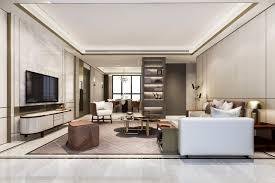-
Новости
- ИССЛЕДОВАТЬ
-
Статьи пользователей
-
Группы
The Role of an Interior Designer Crafting Spaces That Inspire

In a world where aesthetics and functionality merge to shape everyday experiences, the expertise of an interior designer is more relevant than ever. Whether transforming residential homes into warm sanctuaries or designing commercial spaces that enhance productivity, interior designers bring both creativity and strategic thinking to the table.
With the growing demand for personalized and well-curated spaces, interior design is no longer a luxury reserved for the elite. It is now a vital element of modern living, ensuring that interiors are not only visually appealing but also highly functional and reflective of individual personality or brand identity.
What Does an Interior Designer Do?
An interior designer is a trained professional who plans, researches, coordinates, and manages the enhancement of interior environments. Their role goes far beyond choosing color schemes or selecting furniture. Interior designers analyze how a space is used and transform it to optimize flow, lighting, texture, and style, while also complying with building codes and safety regulations.
Some of the core responsibilities of an interior designer include:
-
Space planning and layout optimization
-
Selection of materials, finishes, and furnishings
-
Lighting design and fixture selection
-
Creating mood boards and design concepts
-
Managing budgets and sourcing vendors
-
Supervising construction and installations
Whether the goal is to renovate a kitchen, reimagine a corporate office, or build a dream home from scratch, the interior designer is the creative force behind the transformation.
Why Hire a Professional Interior Designer?
1. Expertise and Training
Professional interior designers bring formal education and hands-on experience to the design process. They have a deep understanding of spatial relationships, color psychology, and design principles. This enables them to create balanced, harmonious interiors that meet functional requirements and aesthetic goals.
2. Time and Cost Efficiency
Many homeowners and business owners assume that hiring a designer is an unnecessary expense. However, the opposite is often true. Interior designers help avoid costly mistakes, streamline the decision-making process, and often have access to exclusive discounts on furnishings, materials, and accessories.
3. Personalized Design Approach
No two clients are the same, and no two spaces should be either. A skilled interior designer tailors each project to reflect the client’s lifestyle, needs, and vision. They bring fresh ideas and a unique perspective, ensuring that each space is both original and functional.
4. Access to a Professional Network
Interior designers work closely with a network of reliable contractors, suppliers, and artisans. This network ensures quality workmanship and timely execution, significantly reducing the stress involved in managing a project independently.
5. Enhances Property Value
Well-designed interiors increase the market value of a property. Whether you're planning to sell or rent, professional interior design can significantly boost appeal, leading to higher returns and quicker transactions.
Residential vs. Commercial Interior Design
The scope of interior design varies significantly depending on the type of space being designed.
Residential Interior Design
This category focuses on homes, including apartments, townhouses, and villas. Interior designers work to create comfortable, livable spaces that reflect the personalities and daily habits of the occupants. Projects may include:
-
Kitchen and bathroom renovations
-
Living room redecoration
-
Bedroom makeovers
-
Custom-built furniture design
The key to successful residential design lies in personalization, with special attention to comfort, function, and style.
Commercial Interior Design
Commercial designers handle offices, retail stores, hotels, restaurants, and public buildings. These projects demand a deeper focus on branding, space efficiency, safety, and customer experience. The goal is to create environments that foster productivity, foot traffic, or hospitality, depending on the business type.
Commercial design projects often involve:
-
Open-plan office layouts
-
Branding integration
-
Lighting and acoustics planning
-
Ergonomic furniture solutions
-
Code compliance and sustainability
Latest Trends in Interior Design
The field of interior design evolves with social, cultural, and technological shifts. Some current trends gaining momentum include:
1. Biophilic Design
Incorporating natural elements such as plants, wood textures, and organic shapes into interiors promotes well-being and relaxation. This trend reflects a growing awareness of mental health and sustainability.
2. Minimalism and Functionality
The concept of “less is more” continues to thrive. Clean lines, neutral tones, and multi-functional furniture are being used to maximize space while maintaining elegance.
3. Smart Home Integration
Technology is transforming interior spaces. Designers now integrate smart lighting, climate control, and voice-activated systems into their plans to enhance convenience and energy efficiency.
4. Sustainability
Eco-conscious materials, energy-efficient appliances, and upcycled furniture are in demand as both homeowners and businesses seek to reduce their environmental impact.
5. Mixed Textures and Vintage Fusion
Layering different textures — like metal, velvet, concrete, and wood — adds depth and character to interiors. Blending vintage pieces with modern design has also become popular, giving spaces a timeless, curated feel.
How to Choose the Right Interior Designer
Selecting the right designer is crucial for the success of any project. Here are key factors to consider:
-
Portfolio Review: Examine their past work to see if their style aligns with your vision.
-
Client Testimonials: Look for reviews and feedback from previous clients.
-
Credentials and Certifications: Ensure they have the necessary education and licensing.
-
Budget Compatibility: Make sure they can work within your financial plan.
-
Communication and Collaboration: Choose someone who listens well and values your input.
Conclusion
An interior designer is more than just someone who picks out wallpaper and curtains — they are visionaries who bring life to lifeless spaces and elevate the human experience through thoughtful design. Whether you're looking to revamp your home or redefine your brand environment, working with a professional interior designer is an investment in beauty, comfort, and long-term value.






